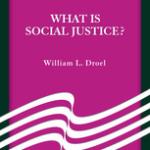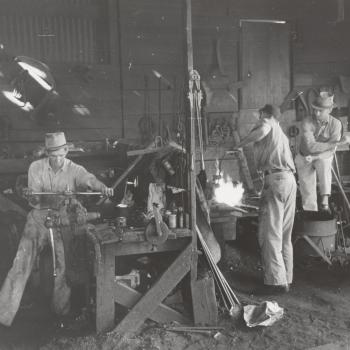It was 20 years ago that Robert Putnam elevated the concept of social capital on the social policy and social science agenda with his Bowling Alone (Simon & Schuster, 2000). Putnam of Harvard exhaustively crunched all the numbers to prove the steady depletion of community life since the mid-1960s—the loss of members and energy in political parties, churches, nationwide non-profits, school boards, unions, civic groups and even bowling leagues.
“The health of civil society is in many ways just as distressing as it was 20 years ago,” writes Alexandra Hudson in National Affairs (Fall 2020). Changes for the better are few. At first glance the voter participation rate is higher than a 30-year low in 1996. However, voting is now extremely polarized, which is not an indication of civic health.
Church attendance is highly indicative of participation in and donations to other voluntary associations. Since the publication of Bowling Alone, church attendance has only declined further. This decrease applies to mainline churches, Catholic parishes, Orthodox churches and, perhaps surprisingly, to evangelical congregations. In the past young adults might quit going to church, yet return when they had children. Not so anymore. Most young adults—if they ever belonged at all—are not coming back. “The portion of the American public that identifies with traditional religion will continue to dwindle,” Hudson says. This does not mean, she quickly adds, that young adults and others are secularists. They pray. They well may be searching for something, but not for a religious community. Others have noted the three-point lite credo of young adults: 1. God exists and maybe created the universe; 2. It is good to help those in need; 3. Whatever.
In American Grace: How Religion Divides and Unites Us (Simon & Schuster, 2010), Putnam along with David Campbell used his high-powered abacus to closely examine religious participation. In its 670 pages American Grace documents the decline of Sunday observance and the inability of churches to attract and retain young adults. Putnam and Campbell also draw attention to Christianity’s pronounced identification with the culture wars. A church leader might be correct in his or her slant on abortion, civil unions, the place of women in society, the status of science and other issues. A church leader who reaches opposite conclusions might be correct. Right or wrong, young adults are not interested in hearing about polarized cultural issues from church leaders. It’s a turn off.
Though the statistics on voluntary associations and civic participation are discouraging, Putnam only sounds the alarm so that community can grow. He has always been cautiously positive.
His latest with Shaylyn Romney Garrett is titled The Upswing (Simon & Schuster, 2020). He discovers that from the late 1800s into the early 20th century our society was individualistic; that inequality was extreme; that culture was polarized. However, our society gradually became more cooperative as the century evolved. Bowling leagues, clubs, denominations, veterans groups, civic endeavors, associations, neighborhood organizations and like attracted members and enriched society. That is, until the mid-1960s when the decline described in Bowling Alone began. So why did things improve after the Gilded Age? Then why more recently was social capital not replenished? Finally, can a new recovery occur? How?
To be continued…
Droel edits INITIATIVES (PO Box 291102, Chicago, IL 60629), a print newsletter on faith and work.










